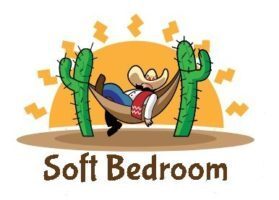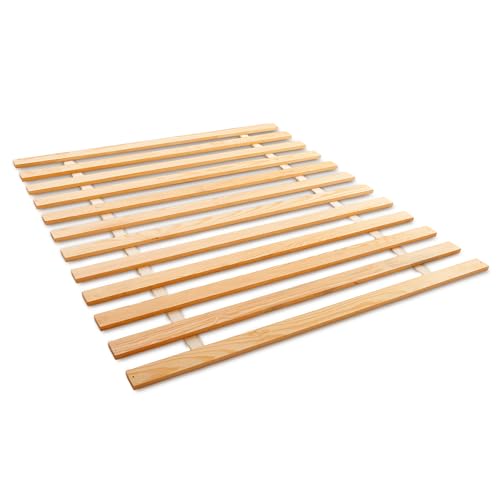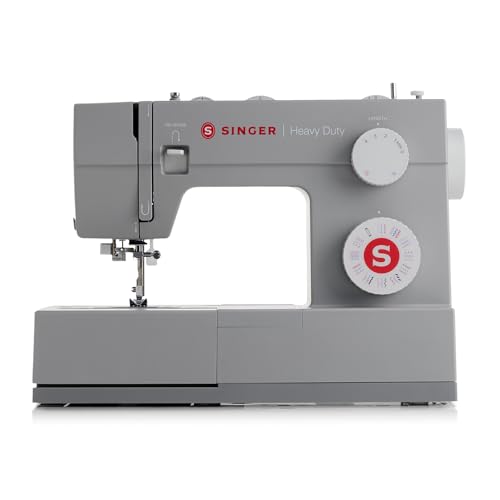Introduction
Bed slats are the unsung heroes of a supportive and long-lasting bed. Simply put, they are a series of evenly spaced wooden or metal planks that lie across your bed frame to hold up your mattress. But their role goes far beyond that basic definition—they can significantly impact how well you sleep and how long your mattress lasts.
Have you ever experienced a sagging mattress or felt like your bed just wasn’t providing the support you expected? The culprit might not be the mattress itself but what lies underneath. Bed slats distribute weight evenly, enhance airflow, and reduce mattress wear—factors that directly influence comfort, spinal alignment, and sleep quality.
Best Bed Slats for Support
If you’re considering upgrading your bed support system, choosing the right bed slats is essential. Not all slats are created equal—some offer superior strength, durability, and airflow, while others cater more to ease of setup or affordability. Here are our top 3 recommended products for outstanding bed support:
1. Zinus Deepak Easy Assembly Wood Slat Replacement Bed Frame
- Strong and Sturdy 1.6 inch profile wood slat mattress support. Ideal for use…
- Fast and easy assembly with convenient and compact packaging
- Offers additional support for spring, hybrid, and memory foam mattresses
- Why We Picked It:
Easy to assemble, durable, and supportive—this all-in-one slat system comes with a steel frame and closely spaced wooden slats, ensuring optimal support for all mattress types. - Key Features:
- No box spring needed
- Strong steel frame with solid wood slats
- Available in multiple sizes
2. Hercules Xtreme Heavy Duty Solid Wood Bed Support Slats
- Sturdy Wood Construction: Crafted from durable solid Southern Yellow Pine, these…
- Reliable Support: Specifically designed to provide reliable support and ensure…
- Eliminates Need for Box Spring: Transform your bed into a modern platform setup…
- Why We Picked It:
These slats are ideal for heavier individuals or families looking for a solid, no-flex platform. They’re thick, dense, and designed for maximum durability. - Key Features:
- Heavy-duty solid wood construction
- Works with most bed frames
- Easy to roll out and install
3. Olee Sleep 18 Inch Tall Heavy Duty Steel Slat Bed Frame
- [ Outer Dimensions ] – 76.5 x 55.5 x 18 inches
- [ Inner Dimensions ] – 74.5 x 53.5 inches
- [ Sturdy Construction ] – Crafted with reinforced high-quality steel which…
- Why We Picked It:
For those seeking minimalist design and extra under-bed storage, this steel slat frame is a strong, squeak-free solution that supports even the heaviest mattresses. - Key Features:
- Noise-free steel slat system
- 18-inch height for extra storage space
- Easy tool-free assembly
What Are Bed Slats?
Bed slats are horizontal planks, usually made of wood or metal, that sit across a bed frame to support your mattress. They form a supportive base that distributes weight evenly and replaces the need for a traditional box spring.
There are two main types of bed slats:
- Solid slats:
Made of sturdy wood like pine or birch, these offer firmer support and are spaced farther apart. - Sprung slats (or curved slats):
Made from flexible wood such as beech, they curve upward slightly to provide a softer, more responsive base.
Key Characteristics of Bed Slats
- Material:
Most are made from wood (pine, birch, or beech), but metal slats are common in modern frames. - Spacing:
The gap between slats affects mattress performance. Closer spacing offers better support, while wider gaps may cause sagging. - Mounting style:
Some slats are built into the bed frame, while others are removable or rollable for ease of setup and transport.
Why They Matter
- Improved mattress ventilation
- Even weight distribution
- Prevention of sagging or mattress indentations
- Reduced noise compared to box springs
- Minimal motion transfer between partners
How Bed Slats Improve Mattress Support
Bed slats play a critical role in the overall comfort, durability, and performance of your mattress. Without a solid foundation, even the best mattress can feel unsupportive or wear out too soon. Here’s how slats make a difference:
Promote Even Weight Distribution
Bed slats help to evenly distribute your body weight across the mattress. This prevents pressure points and ensures your mattress maintains its shape over time.
- Prevents the “dip” or sag in the center of the bed
- Supports heavier body areas like hips and shoulders
- Minimizes pressure buildup for side and back sleepers
Enhance Airflow and Hygiene
Unlike solid bases or box springs, slats allow air to circulate beneath the mattress. This is essential for foam mattresses and humid climates.
- Reduces heat buildup for a cooler sleep
- Helps prevent mold, mildew, and dust mites
- Extends mattress freshness and longevity
Improve Edge-to-Edge Support
When properly spaced, slats support the full surface of the mattress—including the edges, which are often neglected in poor setups.
- Makes the bed feel larger and more usable
- Reduces edge breakdown in foam mattresses
- Ideal for couples or active sleepers
Support Better Spinal Alignment
Good slats support the natural curvature of your spine by keeping the mattress flat and firm.
- Promotes proper posture during sleep
- Reduces lower back and neck pain
- Beneficial for those with orthopedic concerns
Solid vs. Sprung Slats: Which Is Better?
Choosing between solid and sprung slats can significantly affect how your mattress feels and performs. While both provide essential support, they each serve different sleeping needs and preferences.
Solid Slats
Solid slats are typically flat wooden boards made from strong materials like pine or birch. They’re positioned with small gaps and are known for offering a firmer, more rigid sleeping surface.
Pros:
- Offers firm, stable support
- Ideal for people who need extra back support
- Helps mattresses retain shape over time
- Generally more affordable
Cons:
- Can feel too hard for some sleepers
- Less responsive to movement or pressure
- May cause wear on softer mattresses over time
Sprung Slats
Sprung slats are slightly curved and usually made from flexible woods like beech. The curve allows for a cushioned, more responsive surface that adjusts with your body weight.
Pros:
- Adds a layer of comfort and bounce
- Extends mattress life by absorbing movement
- Better for foam or hybrid mattresses
- Great for couples due to motion absorption
Cons:
- Can feel too soft for heavier individuals
- Slightly more expensive
- May need replacement sooner than solid slats
Which Should You Choose?
- Choose solid slats if: you prefer firm support, have a spring mattress, or need a more affordable option.
- Choose sprung slats if: you like a bit more “give,” use a foam mattress, or want enhanced motion isolation.
Your ideal choice depends on personal comfort preferences, body weight, and mattress type.
How to Choose the Right Bed Slats for Your Mattress
Not all bed slats are created equal—and choosing the right ones depends on your mattress type, sleeping style, and even your bedroom environment. Here’s what to consider before making a decision:
Match Slat Type to Mattress
Different mattresses pair better with specific slat types.
- Memory foam or latex mattresses → Best with closely spaced solid or sprung slats
- Innerspring mattresses → Work well with solid slats for firmer support
- Hybrid mattresses → Compatible with either, depending on firmness preference
Tip: Gaps between slats should be no wider than 2.5 to 3 inches for foam mattresses to prevent sagging.
Consider Your Weight and Sleep Style
Your body type and sleeping habits affect how slats perform.
- Heavier individuals (over 230 lbs) → Opt for solid slats or reinforced frames
- Side sleepers → Might prefer sprung slats for softer support at pressure points
- Back/stomach sleepers → Often benefit from solid slats for spinal alignment
Check Frame Compatibility
Make sure the slats fit your existing bed frame.
- Look for slats that match the frame size (twin, queen, king, etc.)
- Some frames require center support beams, especially for queen size and larger
- Choose slats with non-slip or hook-in features for stability
Think About Durability and Maintenance
- Metal slats last longer but may be noisier
- Wooden slats are quieter but need checking for warping over time
- Look for slats that are easy to install or replace
Do Bed Slats Replace a Box Spring?
Yes—bed slats can completely replace a box spring, and in many cases, they’re the preferred option for modern mattresses and minimalist bed designs. But the right choice depends on your specific sleep setup and support needs.
Why Bed Slats Can Replace a Box Spring
- Direct mattress support: Slats provide a flat, sturdy surface that supports the mattress directly without the need for an additional base.
- Improved airflow: Unlike box springs, which trap heat and moisture, slats allow for better air circulation beneath the mattress.
- Compatibility with all mattress types: Memory foam, latex, hybrid, and innerspring mattresses all work well on slatted bases.
- Better aesthetics: Slatted bed frames often offer a more modern, streamlined look without the bulk of a box spring.
Advantages Over a Box Spring
- Lightweight and easier to move
- Generally more affordable
- Lower bed height for easier access
- No squeaking springs over time
When a Box Spring Might Still Be Useful
While slats are increasingly popular, some setups may still benefit from a box spring:
- If you’re using an old-fashioned innerspring mattress that lacks internal support
- If your bed frame requires a box spring to reach the correct height
- If you prefer a higher bed for style or accessibility reasons
Conclusion
Bed slats may not be the most glamorous part of your sleep setup, but they’re absolutely essential to achieving optimal support, comfort, and mattress longevity. Whether you’re upgrading your entire bed frame or just replacing an old support system, understanding the role of bed slats can help you sleep better—and smarter.
Here’s a quick recap:
- They replace box springs and support all mattress types
- They improve airflow, which keeps your mattress fresh
- They prevent sagging and extend mattress lifespan
- Choosing the right slats depends on your weight, mattress type, and sleep preferences
Frequently Asked Questions About Bed Slats
When shopping for or upgrading your bed, many people wonder about bed slats—how they work, what to choose, and how they compare to other support systems. Below are the most commonly asked questions, answered clearly and concisely.
Do bed slats make a difference?
Yes, bed slats make a big difference. They:
- Provide a solid, even base for your mattress
- Enhance comfort and spinal alignment
- Help prevent mattress sagging over time
- Improve airflow, keeping your sleep surface cooler and fresher
Can I put a mattress directly on slats?
Absolutely. Most modern mattresses, especially memory foam, latex, and hybrids, are designed to rest directly on slats—no box spring required. Just make sure:
- Slats are spaced no more than 2.5–3 inches apart
- The slats are sturdy and well-secured
- There’s a center support rail for larger bed sizes (queen and up)
Do bed slats squeak?
Not usually. Squeaks often result from:
- Loose slats rubbing against the frame
- Old wood that’s warped or cracked
- Metal-on-metal contact in the frame
Solutions: Use anti-slip tape, tighten all fasteners, or consider slats with rubber end caps or a noise-free frame.
Can I replace bed slats myself?
Yes, replacing bed slats is usually simple. You can:
- Buy replacement slat sets online
- Cut your own from lumber (measure carefully)
- Upgrade to a slat roll system or metal version for added convenience
How long do bed slats last?
Quality wooden or metal slats can last 5–10 years or more with proper care. Regularly inspect for:
- Warping
- Cracks
- Loose fittings






















![ZINUS 12 Inch Green Tea Memory Foam Mattress [New Version],...](https://m.media-amazon.com/images/I/51lmtTd04IL.jpg)











